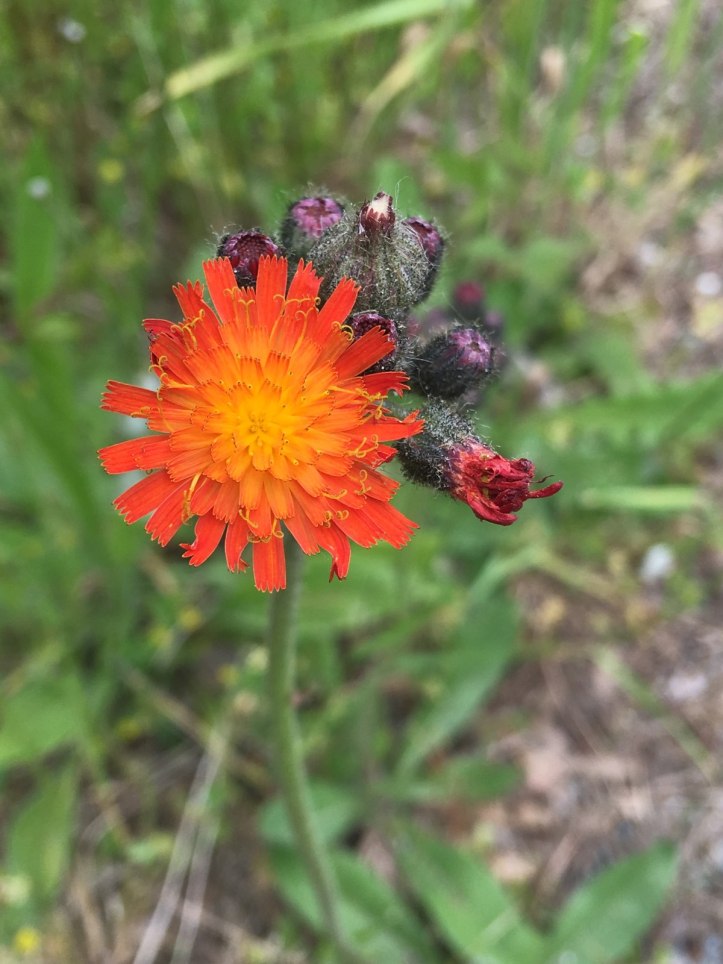
There are few flowers so intensely flame-colored as orange hawkweed. This plant truly deserves one of its common names, Devil’s Paintbrush, both for its fiery colors and for its devilish behavior as a noxious weed in North America.
When orange hawkweed (Hieracium aurantiacum) is in flower, it is easy to identify by its clusters of orange-red flowers that look like little orange dandelions. Before the flowers open, look for the tight clusters of black, hairy buds of orange hawkweed on hairy stems. The leaves are also hairy and are usually just around the base of the stem. The leaf edges don’t have teeth or lobed and the leaf shape is like a spatula.



The flowers start to open in late May to mid June and continue to bloom through the summer. If plants are mowed they can re-flower later in the summer. When plants begin to flower, also look for new stolons covered with fuzzy white hairs. Each plant produces 4 to 8 leafy stolons that can extend up to 1 foot and form the next generation of plants.

In late summer look for dandelion-like seedheads. Unlike dandelions, the relatively heavy seeds don’t fly far in the wind, but they do get caught on animals, boots and tires and get moved much longer distances that way.

In the Pacific Northwest, orange hawkweed often grows most vigorously in the areas where it has the most impact, in our mountain meadows and rangeland. It crowds out slower-growing native wildflowers and more palatable forage species. Unlike many native wildflowers, orange hawkweed spreads by creeping stolons and can form a dense mat that excludes other plants. It is tolerant of the low nutrient soils and short growing season of our mountain areas and it lacks natural predators that would help keep it in check in its native range.

Controlling orange hawkweed is much harder than it would seem. Physical removal rarely succeeds in the shallow, hard soils we often find it in. The fragments of roots and stolons quickly regrow. Even if you do remove all the roots, the seed bank helps re-populate areas before other plants can re-establish. Smothering hawkweed with heavy layers of mulch should work, but it has to be carefully maintained to avoid plants growing out of the mulched area. And mulch isn’t very practical on mountain slopes! Even chemical control is difficult. The plants are well-defended with their hairy leaves and stems. Did I mention how devilish this plant is!

Orange hawkweed has spread relatively quickly over the northern states and provinces of North America since it was first introduced in the late 1800’s from Europe. Where it is native in northern and central Europe, it is most often found in the mountains. It was introduced multiple times to North America as an ornamental garden flower.
First reported in Washington in Spokane in 1945, it is now established and spreading in most of the counties of the state with the exception of central Washington, including King County.
One of the most heavily infested areas of King County is the town of Skykomish and other communities off of Highway 2. One homeowner near Skykomish told me that her yard became infested after she spread seeds from one of those “meadow mix” packages. The same appears to have happened in the Alpental Community near Snoqualmie Pass where it is also very common. And, of course, it only takes one infested yard to spread a plant throughout a neighborhood and into the surrounding forests and meadows.
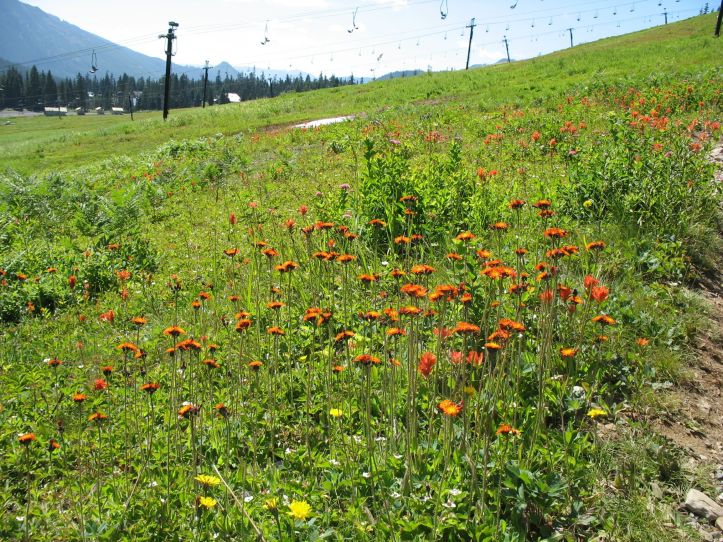
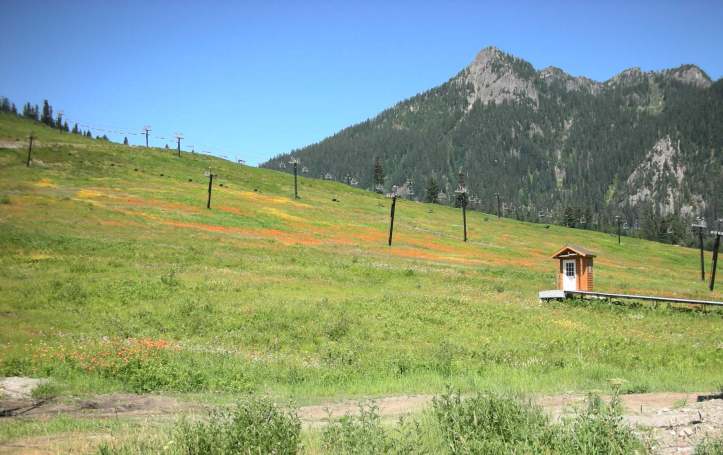
The Washington state noxious weed law requires landowners to control orange hawkweed as a regulated Class B noxious weed in King County. However, because of the challenge of control and the sensitivity of the habitats where it grows, the noxious weed program began offering in-house control of orange hawkweed in the Skykomish area in 2005 and in Alpental and other Snoqualmie Pass and North Bend areas in 2007. In addition, a cooperative and coordinated effort to control orange hawkweed on the ski slopes of Snoqualmie Pass began in earnest in 2010.
Currently there are 510 orange hawkweed sites in King County that total about 7 acres combined. This is a big reduction from the peak year of 2008, when there were fewer sites, only 368, but covering a total of 60 acres. Much of that area was near Snoqualmie Pass on the ski hills before control got underway there. All orange hawkweed sites in King County are controlled annually, but the plant is stubborn and the populations persist for many years in spite of control efforts, especially in areas that are regularly disturbed or mowed.
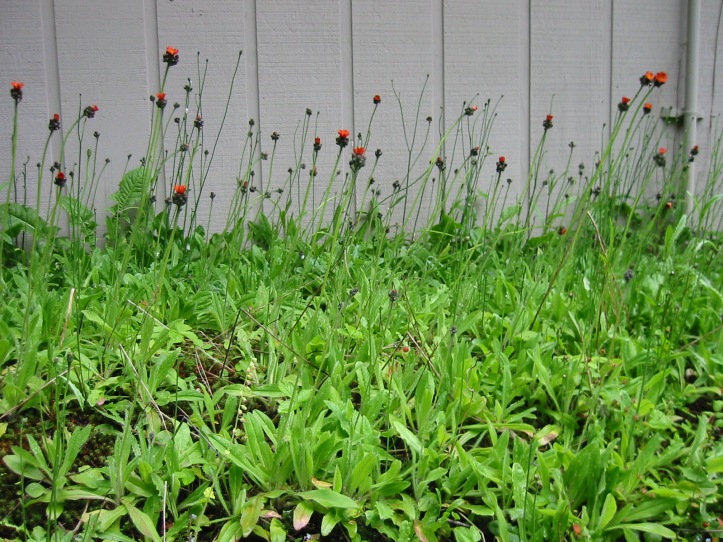
There are also several other species of hawkweed that are a problem in King County. These all have yellow flowers and are tricky to identify and distinguish from other weedy members of the sunflower family. Look for hairs on the stems, leaves and flower buds to tell them apart from dandelions.
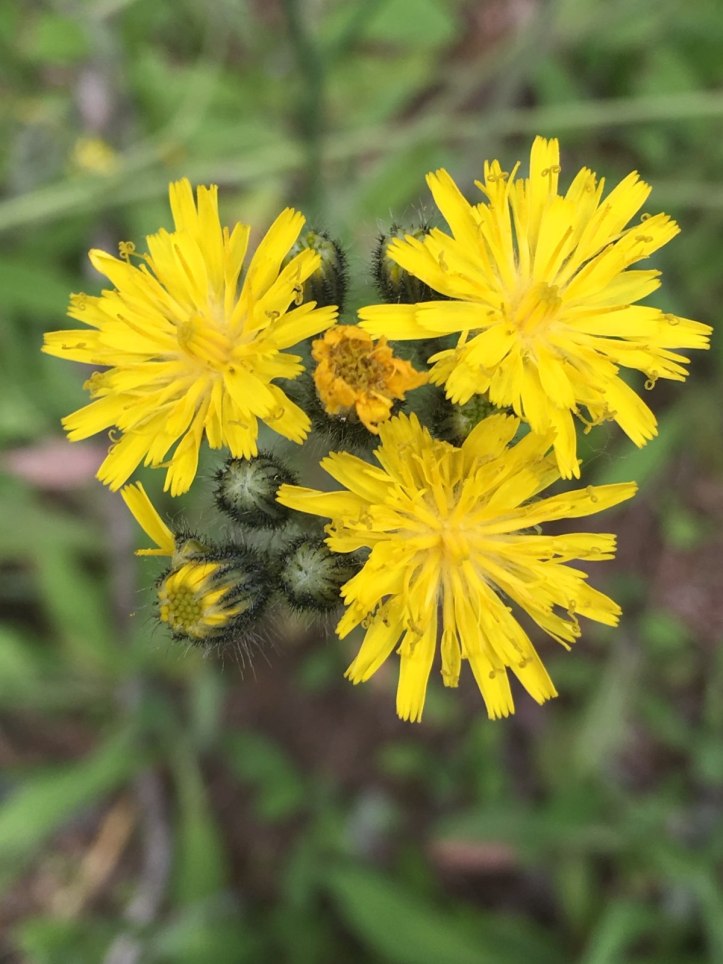
For help in identifying orange and yellow hawkweeds, you can email us photos. To see noxious weed identification photos and information, visit our website.
Because of the potential damage that orange hawkweed can do especially in mountain meadow habitats, please contact the King County Noxious Weed Program if you spot any orange hawkweed or other species of invasive hawkweed in the county. You can easily report noxious weed locations to us with the mobile app King County Connect.
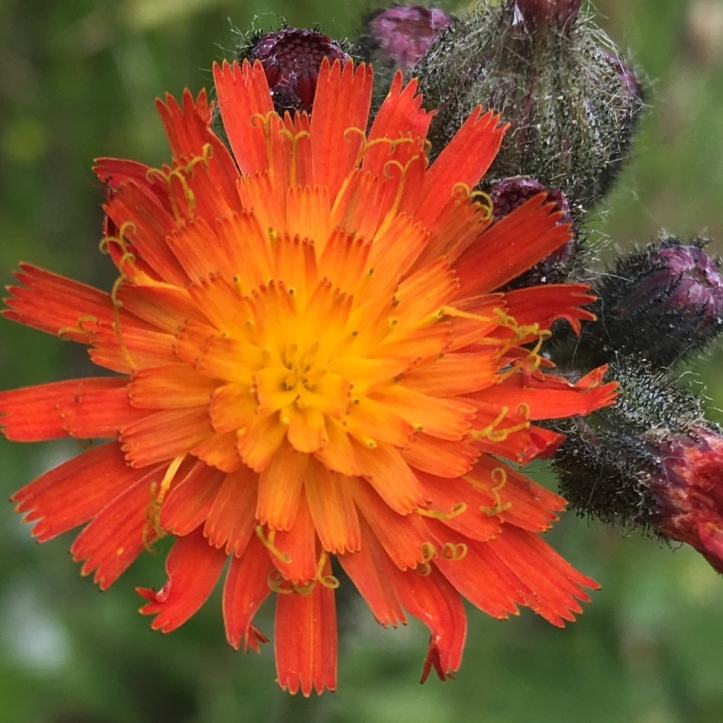
I will certainly keep a sharp eye out for this plant in North Bend. I grew up in Yakima and I have worked in many communities in western WA, but it does not look familiar.
Thank you!!
This is not in King County, but I just spotted some in Darrington. On the White Horse – Swede Heaven trail
Thanks! If you put in a report on EDDMapS.org or iNaturalist that can help the Forest Service track it down. Thanks for watching for weeds!
I live on Lake Bosworth, just south of Granite Falls. My neighbors 6 acres of field are full of these flowers. I have horses, he doesn’t. I’m praying these don’t make their way onto my pastures….
Oh no! Your county weed board might be able to help if you let them know where it’s growing.
I’d like to know, is the hawkweed poisonous? If not, then, why are they considered a “noxious” weed (wild-growing plant)?